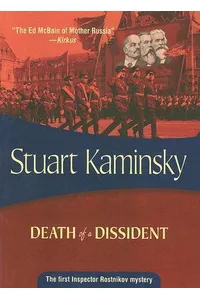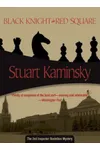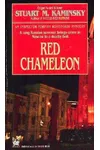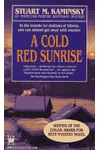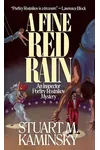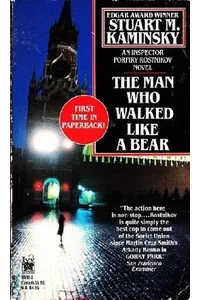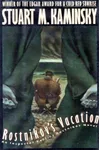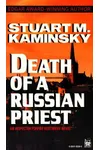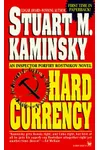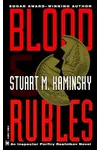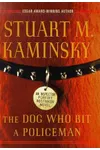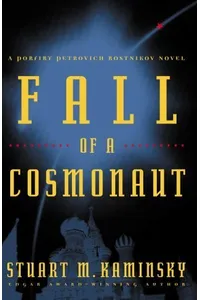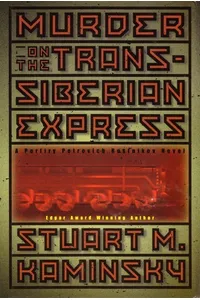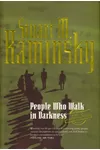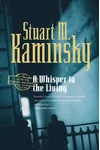Step into the shadowy streets of Soviet Moscow, where Inspector Porfiry Petrovich Rostnikov, a bear of a man with a sharp mind and a knack for plumbing, unravels mysteries amid political intrigue! Stuart M. Kaminsky’s Inspector Rostnikov series, a gripping blend of crime fiction and historical drama, invites readers into a world where every case is a dance with danger and bureaucracy. Spanning 16 novels from 1981 to 2009, this series captures the gritty essence of Soviet and post-Soviet Russia through the eyes of a principled detective.
With its richly drawn characters and atmospheric settings, the series earned Kaminsky an Edgar Award and a loyal following. Whether you’re a mystery buff or a history enthusiast, Rostnikov’s world is a thrilling ride you won’t want to miss!
How Inspector Rostnikov Began
Stuart M. Kaminsky, a Chicago-born mystery writer and film professor, launched the Inspector Rostnikov series in 1981 with Death of a Dissident. Inspired by his fascination with Russian culture and the complexities of Soviet society, Kaminsky crafted Rostnikov as a morally steadfast cop navigating a corrupt system. His academic background, including a Ph.D. from Northwestern, lent depth to the series’ portrayal of Moscow’s political and social landscape. Kaminsky’s love for police procedurals, particularly Ed McBain’s 87th Precinct, shaped Rostnikov’s team-oriented investigations, setting the stage for a series that’s as much about human connections as it is about solving crimes.
The Heart of Inspector Rostnikov
The series kicks off with Death of a Dissident (1981), where Rostnikov investigates the murder of a dissident about to stand trial, uncovering a killer wielding uniquely Russian weapons—a hammer, sickle, and vodka bottle. In Black Knight in Red Square (1984), a terrorist group targets the Moscow Film Festival, forcing Rostnikov to thwart a deadly plot under KGB scrutiny. A Cold Red Sunrise (1988), the Edgar Award winner, sees Rostnikov demoted to Siberia to probe a commissar’s murder, revealing a web of betrayal. Later, Tarnished Icons (1997) tackles a crime spree tied to a missing Tsarist treasure, blending historical mystery with modern chaos.
Kaminsky’s novels shine through their themes of resilience, morality, and the clash between individual honor and systemic corruption. Rostnikov, a wounded war veteran with a Jewish wife, faces constant suspicion yet remains a beacon of hope. The series’ vivid Moscow setting, from crumbling hotels to icy Siberian outposts, feels like a character itself, reflecting Russia’s turbulent transition from Brezhnev to Putin. Kaminsky’s style, blending taut suspense with dry humor, makes each book a page-turner that’s both thrilling and thought-provoking.
Why Inspector Rostnikov Resonates
The Inspector Rostnikov series stands out for its unflinching look at Soviet and post-Soviet life, offering readers a window into a world of scarcity, surveillance, and shifting loyalties. Kaminsky’s ability to weave historical context into gripping mysteries has earned praise from critics and inspired authors like Sara Paretsky. Fans on platforms like Goodreads cherish Rostnikov’s subtle intelligence and the series’ rich character development, with some calling it 'a masterclass in police procedurals.' Its enduring appeal lies in its timeless exploration of justice in an unjust world, making it a must-read for mystery lovers.
- Publication Years: 1981–2009
- Number of Books: 16
- Notable Award: Edgar Award for Best Novel (1989) for A Cold Red Sunrise
- Setting: Moscow, Russia, spanning Soviet and post-Soviet eras
Grab Death of a Dissident and dive into Inspector Rostnikov’s gripping world of mystery and intrigue today!
